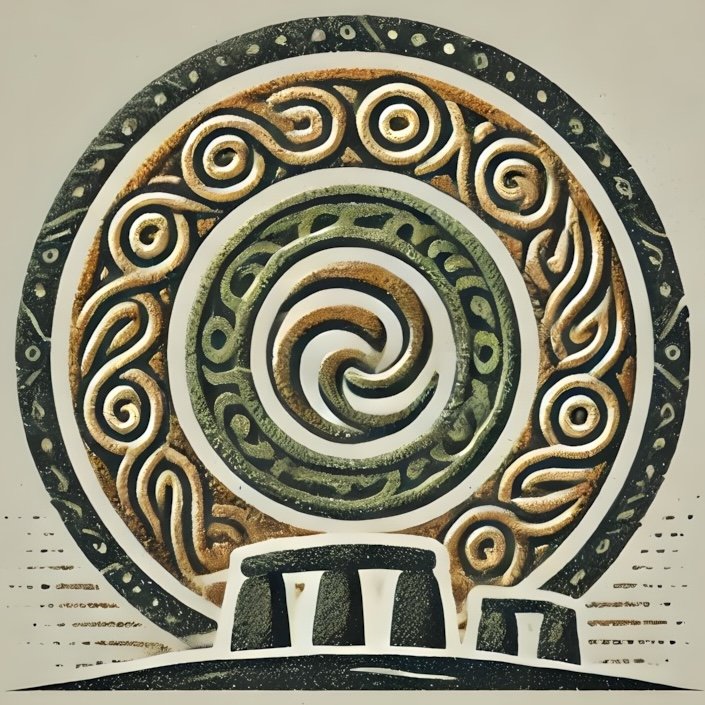Ireland’s landscape is a tapestry woven with the threads of its ancient past, where towering stone structures and sacred mounds whisper the stories of a time long gone. The period between 4000 and 2500 BCE marks a significant transformation in Irish society, characterized by the emergence of farming, the establishment of settled communities, and the construction of monumental megalithic tombs. This era, often referred to as the Neolithic period, laid the foundation for Ireland’s rich cultural heritage, intertwining the realms of history and mythology.
The Shift to Farming and Settled Life
Before the dawn of farming, Ireland was predominantly inhabited by hunter-gatherers who roamed the land, living off the bounty of nature. However, around 4000 BCE, a profound shift began to take place. The introduction of agriculture, brought by settlers from continental Europe, transformed the way people lived. These early farmers cultivated crops such as barley and wheat and domesticated animals like cattle and sheep, leading to a more stable and settled lifestyle.
This transition to farming allowed communities to grow, fostering the development of social structures and trade networks. As people began to establish permanent settlements, they sought to create spaces that reflected their beliefs, values, and connection to the land. This desire for permanence and expression culminated in the construction of megalithic structures, which served not only as burial sites but also as communal gathering places and symbols of identity.
The Great Megalithic Tombs
The megalithic tombs of Ireland are among the most remarkable achievements of prehistoric engineering and artistry. These structures, built from massive stones, are often classified into three main types: passage tombs, court tombs, and portal tombs. Each type reflects the diverse burial practices and beliefs of the Neolithic people.
Passage Tombs
Perhaps the most famous of these are the passage tombs, with Newgrange in County Meath being the most iconic. Built around 3200 BCE, Newgrange is older than Stonehenge and the Great Pyramids of Giza. This impressive structure features a long passage leading to a central chamber, where the dead were laid to rest. What makes Newgrange truly extraordinary is its alignment with the winter solstice. Each year, as the sun rises on December 21st, sunlight floods the inner chamber, illuminating the burial site and creating a profound connection between the living and the dead.
Court Tombs
Court tombs, characterized by their semi-circular forecourts and long burial chambers, can be found scattered across the Irish landscape. These structures, such as those at Carrowmore in County Sligo, often served as communal burial sites, reflecting the importance of kinship and community in Neolithic society. The design of court tombs suggests a focus on ritual and ceremony, with the forecourt likely serving as a space for gatherings and offerings.
Portal Tombs
Portal tombs, or dolmens, are another significant type of megalithic structure. These consist of a large capstone supported by upright stones, creating a distinctive table-like appearance. The Poulnabrone Dolmen in County Clare is a prime example, standing as a testament to the ingenuity of its builders. These tombs were often used for individual burials, and their stark simplicity evokes a sense of reverence for the deceased.
Key Sites
Ireland is dotted with megalithic sites, each with its own unique story and significance. Here are a few key locations that offer a glimpse into the lives of the builders of megaliths:
1. **Newgrange (Brú na Bóinne)**: As mentioned, Newgrange is a UNESCO World Heritage Site and a must-visit for anyone interested in Irish prehistory. The site is not only an architectural marvel but also a spiritual center that continues to draw visitors seeking to connect with its ancient energy.
2. **Knowth**: Located near Newgrange, Knowth features a complex of passage tombs and is renowned for its impressive collection of megalithic art. The site contains over 200 decorated stones, showcasing the artistic expression of the Neolithic people.
3. **Carrowmore**: This site in County Sligo is one of the largest cemeteries of megalithic tombs in Ireland. With over 60 tombs, Carrowmore offers a fascinating insight into the burial practices and social structures of its builders.
4. **Poulnabrone Dolmen**: This iconic portal tomb in the Burren region of County Clare is a striking example of Neolithic engineering. The dolmen’s dramatic setting amidst the limestone landscape adds to its allure.
5. **Loughcrew**: A series of passage tombs located in County Meath, Loughcrew is known for its stunning views and intricate carvings. The tombs here are aligned with the equinoxes, further highlighting the builders’ astronomical knowledge.
Mythological Connections: The Tuatha Dé Danann and the Sacred Mounds
The megalithic tombs of Ireland are not only archaeological treasures but also deeply intertwined with the fabric of Irish mythology. The Tuatha Dé Danann, a mythical race of gods and heroes in Irish folklore, are often associated with these ancient structures. According to legend, the Tuatha Dé Danann were skilled artisans and magicians who brought knowledge and culture to Ireland.
The sacred mounds, or “sidhe,” are believed to be the dwelling places of these otherworldly beings. Many megalithic sites, including burial mounds and stone circles, are thought to be connected to the Tuatha Dé Danann, serving as portals between the earthly realm and the mystical world. The legends surrounding these sites often speak of the importance of honoring the ancestors and the cyclical nature of life and death.
Visiting these megalithic sites allows one to not only witness the architectural brilliance of the builders but also to immerse oneself in the rich tapestry of Irish mythology. The stories of the Tuatha Dé Danann and their connection to the land resonate deeply, reminding us that the past is never truly gone; it lives on in the stones, the earth, and the stories we share.
Megalith Builders
The builders of megaliths left an indelible mark on the Irish landscape, creating structures that continue to captivate and inspire. Their transition to farming and settled life paved the way for a rich cultural heritage, reflected in the monumental tombs that dot the countryside. As we explore these ancient sites, we not only uncover the history of a people but also connect with the myths and legends that have shaped Ireland’s identity. The megaliths stand as a testament to the enduring spirit of the builders, inviting us to reflect on our own place in the continuum of time and the stories that bind us to the land.

